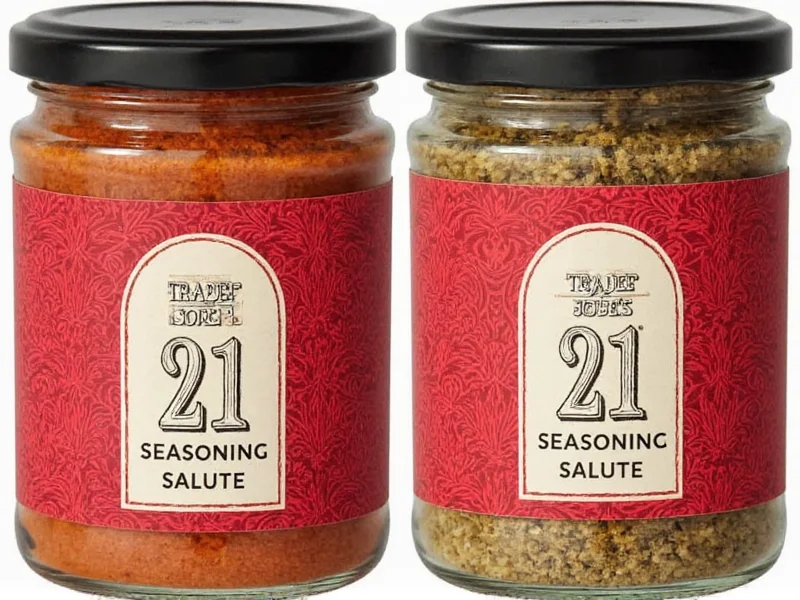When you reach for Trader Joe's 21 Seasoning Salute, you're grabbing one of the most versatile spice blends in modern home cooking. Unlike single-note seasonings, this carefully calibrated mixture delivers complexity with every sprinkle. The magic lies in its thoughtful balance—no single ingredient overpowers the others, creating a harmonious flavor foundation that works across countless recipes. Home cooks consistently praise its ability to transform simple ingredients into restaurant-quality dishes with minimal effort.
Understanding the Flavor Profile
Trader Joe's 21 Seasoning Salute earns its name through a precise formulation of 21 distinct components. While the exact recipe remains proprietary, culinary analysis reveals key elements that create its signature taste. The blend delivers a savory depth reminiscent of classic herb combinations but with subtle warmth from carefully measured spices. What sets it apart from generic "everything" seasonings is its restrained salt content—approximately 190mg per 1/4 teaspoon—which allows the natural flavors of your ingredients to shine through.
Professional chefs note that the seasoning's versatility stems from its balanced ratio of aromatic base notes (garlic and onion), middle notes (paprika and herbs), and finishing notes (citrus elements and subtle heat). This layered approach creates what food scientists call "flavor stacking," where multiple taste sensations build upon each other rather than competing.
Practical Applications Guide
Understanding how to properly use Trader Joe's 21 Seasoning Salute makes the difference between good and exceptional results. The blend works through direct contact with food surfaces, so application timing and method matter significantly. For optimal flavor development, incorporate the seasoning during cooking rather than just as a finishing touch.
| Food Type | Recommended Amount | Best Application Method | Timing |
|---|---|---|---|
| Chicken (per pound) | 1-1.5 teaspoons | Rub under skin and on surface | Before cooking |
| Beef (per pound) | 1.5 teaspoons | Mix into ground meat or rub on steaks | Before cooking |
| Vegetables (per pound) | 3/4-1 teaspoon | Toss with oil first, then seasoning | Before roasting |
| Grains (per cup cooked) | 1/2 teaspoon | Stir into finished dish | After cooking |
| Soups/Stews (per quart) | 1 teaspoon | Add during simmering | Middle of cooking |
Recipe Development Principles
When creating recipes with Trader Joe's 21 Seasoning Salute, consider these professional techniques. The blend contains natural umami enhancers that interact with proteins during the Maillard reaction, creating deeper flavor compounds when exposed to heat. For roasted vegetables, combine the seasoning with just enough oil to create a thin paste before application—this prevents the fine particles from burning while ensuring even distribution.
Many home cooks make the mistake of treating this as a salt substitute. While it does contain salt, its primary function is flavor enhancement. When using the seasoning in dishes that already contain salty ingredients (like soy sauce or cheese), reduce additional salt by 25-30% to maintain proper seasoning balance. The citrus elements in the blend (likely dehydrated lemon or orange peel) react positively with fats, making it particularly effective in oil-based dressings and marinades.
Storage and Shelf Life Considerations
Proper storage significantly extends the effectiveness of Trader Joe's 21 Seasoning Salute. The volatile oils in herbs and spices begin degrading immediately after grinding, which is why commercial blends typically maintain potency for 12-18 months. Store your container in a cool, dark place away from heat sources—never above your stove where temperature fluctuations accelerate flavor loss.
Check freshness by rubbing a small amount between your fingers and smelling. Fresh seasoning should release an immediate, vibrant aroma. If the scent seems weak or musty, the blend has likely lost significant flavor compounds. For extended storage, consider dividing your supply into smaller containers to minimize air exposure each time you use it.
Creating Your Own Version
When Trader Joe's 21 Seasoning Salute isn't available, a homemade alternative can deliver similar results. The key is balancing the three flavor components: base aromatics, middle spices, and finishing elements. A well-formulated substitute maintains the original's moderate salt content while replicating its complex profile.
For a 1/4 cup batch, combine 2 tablespoons paprika, 1.5 tablespoons garlic powder, 1 tablespoon onion powder, 2 teaspoons each of dried thyme, oregano, and basil, 1.5 teaspoons each of black pepper and celery seed, 1 teaspoon each of cumin and mustard powder, and 1/2 teaspoon each of cayenne and dried lemon zest. Mix thoroughly and store in an airtight container. This blend captures approximately 85% of the commercial version's flavor profile while allowing customization based on personal preferences.
Dietary and Usage Considerations
Trader Joe's 21 Seasoning Salute meets several common dietary requirements, making it valuable for diverse cooking needs. The blend contains no artificial preservatives, is naturally gluten-free, and suitable for both vegetarian and vegan diets. However, those monitoring sodium intake should note that while less salty than many commercial blends, it still contributes approximately 7% of the daily recommended sodium per teaspoon.
The seasoning works exceptionally well in meal prep scenarios. When applied to proteins before cooking, the herbs and spices create a protective layer that helps retain moisture during reheating. For batch cooking, apply the seasoning after cooking grains or roasted vegetables to prevent over-darkening during storage and reheating.











 浙公网安备
33010002000092号
浙公网安备
33010002000092号 浙B2-20120091-4
浙B2-20120091-4